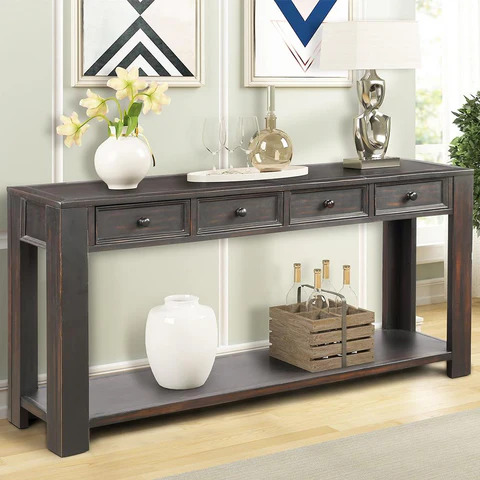Discover the Timeless Beauty of Traditional Chinese Furniture

When it comes to interior design, furniture is more than just a practical necessity—it is a statement of culture, history, and artistry. Among the many furniture traditions around the world, traditional Chinese furniture stands out for its elegance, craftsmanship, and timeless aesthetic. Steeped in centuries of history, traditional Chinese furniture combines functionality and beauty in ways that make it highly sought after, both in China and across the globe.
A Rich History Rooted in Dynasty
The story of traditional Chinese furniture is as rich and vibrant as the Chinese culture itself. Its origins can be traced back to the Han Dynasty (206 BCE – 220 CE), where furniture began as simple, low-profile designs, often in the form of mats and low tables. As dynasties changed, so did the styles and preferences of Chinese furniture. It was during the Tang Dynasty (618 – 907 CE) that furniture began to take on higher forms, resembling the tables and chairs we know today.
However, it was the Ming Dynasty (1368 – 1644 CE) that marked the golden age of traditional Chinese furniture. Ming furniture was characterized by its refined elegance, clean lines, and minimalist design. Pieces were crafted primarily from hardwoods like huanghuali and zitan, which were both durable and beautiful. This style emphasized simplicity, balance, and a deep connection with nature.
The Qing Dynasty (1644 – 1912 CE) followed with its own influence, favoring more ornate designs with intricate carvings, curved details, and inlays of precious materials. Qing furniture displayed opulence and grandeur, reflecting the tastes of the imperial court and wealthy elite.
Features of Traditional Chinese Furniture
One of the most captivating aspects of traditional Chinese furniture is its timeless design principles. These characteristics set it apart and make it easily recognizable:
- Use of High-Quality Hardwoods: Traditional Chinese furniture is often crafted from rare and highly durable hardwoods, such as huanghuali, zitan, and jichi wood. These woods are valued for their strength, rich color, and beautiful grain patterns, ensuring longevity for generations.
- Mortise-and-Tenon Joinery: Unlike modern furniture that often relies on nails and screws, traditional Chinese furniture employs mortise-and-tenon joints. This method of construction allows for seamless connections between parts of the furniture, enhancing durability and aesthetic appeal.
- Symbolic Motifs and Carvings: Symbolism plays a vital role in Chinese culture, and this is evident in furniture designs. Carvings of dragons, phoenixes, lotus flowers, and other symbols represent good fortune, harmony, and longevity. These motifs are not just decorative but carry deep cultural meanings.
- Balance and Symmetry: The design philosophy behind traditional Chinese furniture is influenced by Confucian ideals of balance and harmony. The symmetrical nature of the furniture reflects these principles, creating a sense of peace and order in any space.
- Natural Finishes: Traditional Chinese furniture is often finished with natural oils or lacquer to protect the wood while enhancing its natural beauty. This eco-friendly approach gives the furniture a subtle sheen without compromising its organic appearance.
Key Pieces in Traditional Chinese Furniture
If you are considering adding traditional Chinese furniture to your home, here are some of the key pieces that are not only functional but also stunning works of art:
- The Ming Chair: Known for its elegant curves and ergonomic design, the Ming chair embodies simplicity and comfort. It is a symbol of classic Chinese furniture design.
- The Altar Table: Altar tables, originally used for ancestral worship, have a long, narrow design. Today, they make for striking entryway or console tables in modern homes.
- The Kang Table: Low and practical, the Kang table was traditionally placed on heated platforms. It is now a versatile coffee table that brings cultural flair to living rooms.
- Cabinets and Armoires: Traditional Chinese cabinets feature painted or carved doors, often adorned with motifs of nature or mythical creatures. These storage pieces are both practical and decorative.
- The Opium Bed: This iconic daybed combines comfort with intricate craftsmanship, often featuring detailed carvings and canopies.
How to Incorporate Traditional Chinese Furniture into Your Home
For those inspired to bring the beauty of traditional Chinese furniture into their homes, here are a few tips on how to seamlessly incorporate these pieces:
- Start Small: Introduce a single statement piece, like a Ming chair or a Kang table, to add cultural charm without overwhelming your space.
- Blend with Modern Elements: Pair traditional Chinese furniture with modern décor for a unique fusion of styles. For example, a sleek sofa can be enhanced with an antique Chinese coffee table.
- Create a Focal Point: Use a striking piece, such as an intricately carved cabinet or altar table, as a centerpiece in your living room or dining area.
- Play with Textures and Colors: Complement the natural wood tones of Chinese furniture with soft textiles, such as silk cushions or rugs, to create a harmonious space.
Final Thoughts
The timeless beauty of traditional Chinese furniture lies in its ability to transcend eras and trends. Rooted in history, craftsmanship, and cultural symbolism, these pieces offer more than just functionality—they tell stories, celebrate artistry, and bring balance and harmony to any home. Whether you are an avid collector or someone seeking to enhance your interior design, traditional Chinese furniture offers a bridge between the past and the present, combining elegance and practicality.
By understanding its origins, appreciating its craftsmanship, and finding creative ways to integrate it into modern spaces, you can truly discover the charm and sophistication of traditional Chinese furniture. Embrace this legacy and allow it to transform your home into a space of culture, beauty, and timeless appeal.
